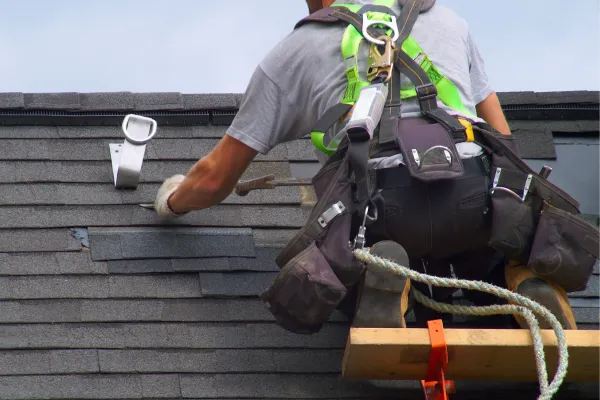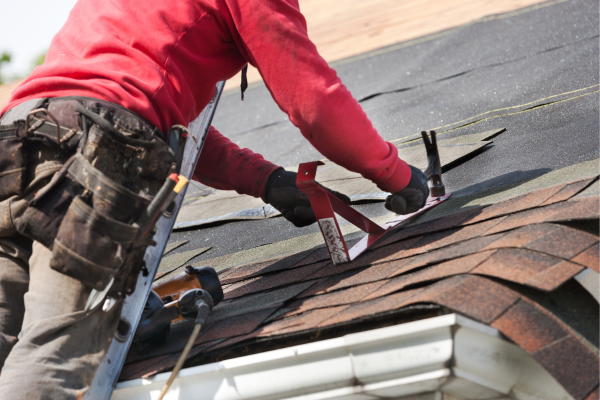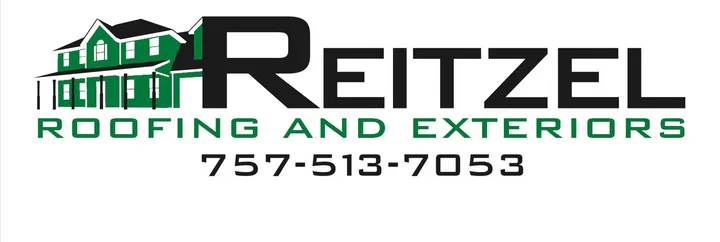LEARNING CENTER
CHECK OUT SOME OF OUR LATEST ARTICLES FROM IN OUR LEARNING CENTER

Roofing Safety: Best Practices for Homeowners and Contractors
Roofing projects are significant undertakings that require careful planning and execution, with safety being a top priority. Whether you're a homeowner taking on a DIY roof repair or a professional contractor working on a roofing job, it's essential to follow best practices to ensure the well-being of everyone involved. In this blog, Reitzel Exteriors highlights crucial roofing safety practices for both homeowners and contractors in Virginia Beach, promoting a safe and accident-free roofing experience.
1. Safety Equipment and Gear
1.1. Personal Protective Equipment (PPE): Prioritize the use of appropriate PPE, such as hard hats, safety goggles, gloves, and sturdy footwear with good traction. For contractors, high-visibility vests are essential to ensure visibility on busy worksites.
1.2. Fall Protection: For any work performed at heights, fall protection equipment, such as harnesses and lifelines, must be used. Homeowners working on roofs should invest in roof anchors and safety harnesses to prevent falls.
2. Weather Awareness
2.1. Check Weather Conditions: Before starting any roofing work, check weather forecasts for the day. Avoid working on the roof during adverse weather conditions such as rain, strong winds, or thunderstorms.
2.2. Slippery Surfaces: Wet or icy roofs can be extremely hazardous. Contractors should ensure the roof surface is dry and safe before starting work. Homeowners should also avoid roof work immediately after rainfall or during freezing temperatures.

3. Ladder Safety
3.1. Proper Placement: Always place ladders on a stable and level surface. Use ladder stabilizers or standoffs to prevent damage to gutters and ensure the ladder is securely positioned.
3.2. Three-Point Contact: When climbing up or down a ladder, maintain three-point contact at all times - two hands and one foot, or two feet and one hand.
3.3. Weight Limit: Be mindful of the ladder's weight limit and never overload it with tools or equipment.
4. Roof Inspection
4.1. Prior Inspection: Before starting any work on the roof, conduct a thorough inspection of the roof's condition. Look for weak spots, damaged areas, or signs of deterioration.
4.2. Safe Access: Use stable and secure access points to get onto the roof. Avoid climbing through windows or using makeshift means of access.
5. Power Tool Safety
5.1. Proper Training: Ensure all workers are properly trained in handling power tools. Homeowners should read and understand the user manual for any tools they use.
5.2. Electrical Safety: If using power tools on the roof, take precautions to avoid electrical hazards. Keep power cords away from water and inspect them for any damage before use.
6. Debris Management
6.1. Clear Work Area: Keep the work area free from clutter and debris to prevent tripping hazards.
6.2. Secure Materials: Secure loose materials and tools to prevent them from falling off the roof.
7. Communication and Supervision
7.1. Communication: Effective communication is crucial, especially on larger roofing projects. Contractors should hold regular safety meetings with their team to discuss safety protocols and address any concerns.
7.2. Supervision: If homeowners hire contractors for roofing work, ensure there is a designated supervisor on-site to oversee safety practices.
8. Emergency Preparedness
8.1. First Aid Kit: Have a well-stocked first aid kit readily available on the job site.
8.2. Emergency Contacts: Keep emergency contact numbers handy and know the location of the nearest medical facilities.
9. Know Your Limits
9.1. Professional Contractors: Contractors should take on projects within their area of expertise and avoid risks beyond their capabilities.
9.2. Homeowners: For complex or extensive roofing work, it's best to hire professional roofing contractors with the necessary expertise and safety training.
10. Regular Maintenance
10.1. Homeowners: Regularly inspect and maintain your roof to address any issues promptly. Preventative maintenance can help avoid larger problems down the road.
10.2. Contractors: Keep your equipment well-maintained and ensure that all safety gear is in proper working condition.
Roofing safety is of utmost importance for both homeowners and contractors. By following best practices, utilizing safety equipment, being weather-aware, and conducting regular inspections, we can create a safer environment for everyone involved in roofing projects. Whether it's a simple repair or a complex installation, let's prioritize safety and ensure accident-free roofing experiences in Virginia Beach.

Our Services
Roof Repairs
Roof Leaks
Roof Storm Damage
Roof Replacement
Residential Roofing
Commercial Roofing
Siding
Trim
Windows
Fencing
Decks
Resources
Learning Center
Financing
Areas We Service
About Us
Contact Us
Privacy Policy
Copyright © 2022 Reitzel Roofing and Exteriors
All Rights Reserved

Our Services
Resources








